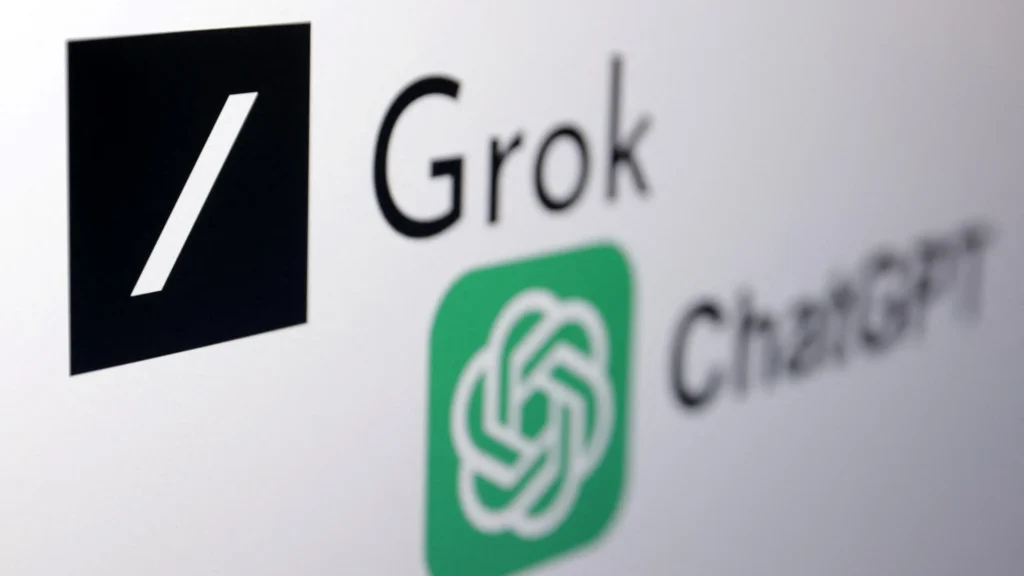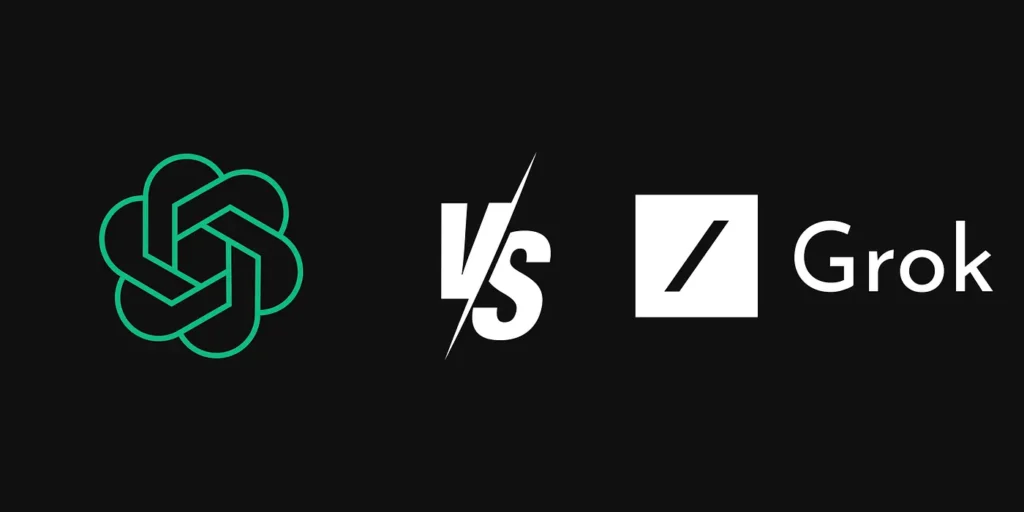Grok 3 DeepSearch vs ChatGPT DeepResearch: A Comparative Analysis

Two offerings stand out for their ambition to streamline complex information gathering and analysis: xAI’s Grok 3 DeepSearch and OpenAI’s ChatGPT DeepResearch in the rapidly evolving landscape of AI-driven research tools. Both platforms aim to automate time-consuming research tasks, yet they diverge in architecture, capabilities, accessibility, and pricing. This in‑depth comparison combines the most recent announcements and expert analyses to help professionals, academics, and organizations determine which tool best suits their needs.
What is Grok DeepSearch?
xAI’s Grok DeepSearch is the latest extension of the Grok 3 model family—a suite of agentic language models trained on the massive “Colossus” supercluster. Launched in February 2025, Grok 3 introduced enhanced reasoning, mathematical problem‑solving, and code generation capabilities; Grok DeepSearch builds on these strengths by integrating a smart search engine that actively browses the web in real time to compile detailed, up‑to‑date responses .
Evolution of the Grok 3 Model
- Grok 1 & 2 Foundations: Early Grok iterations focused on conversational fluency and baseline reasoning.
- Grok 3 Breakthroughs: Debuted on February 19, 2025, Grok 3 blended ten times more compute power than its predecessors, achieving state‑of‑the‑art performance on reasoning, instruction following, and domain‑specific tasks .
DeepSearch Capabilities
- Real‑Time Web Crawling: DeepSearch actively retrieves the latest data, unlike static knowledge‑base models.
- Agentic Workflow: Users submit complex queries—e.g., “Compare international patents in AI chips”—and Grok dispatches multiple sub‑agents to gather, filter, and synthesize information.
- Tool Integration: Early previews hint at upcoming enterprise features including code execution, spreadsheet analysis, and API orchestration, slated for rollout later in 2025.
What is ChatGPT DeepResearch?
OpenAI’s ChatGPT DeepResearch transforms ChatGPT into a multi‑step research analyst, capable of gathering, analyzing, and synthesizing information from across the internet to generate comprehensive reports in minutes rather than hours.
Agentic, Multi‑Step Research
- Automated Pipeline: DeepResearch sequences tasks—source identification, data extraction, contextual analysis—under the hood, producing structured outputs (summaries, tables, citations).
- Model Backbone: Initially powered by the o3 series, OpenAI has since migrated DeepResearch to its cost‑efficient o4‑mini architecture for broader access without sacrificing depth.
Accessibility and Subscription Tiers
- Rollout Timeline:
- February 5, 2025: Pro users in UK/EEA gain access.
- February 25, 2025: DeepResearch opens to all Plus subscribers globally.
- Lightweight Version: A “lite” DeepResearch mode offers five free queries per month for non‑subscribers, and expanded limits for Plus, Team, and Pro plans at reduced compute cost .

How do their core architectures and performance compare?
At their heart, both Grok DeepSearch and ChatGPT DeepResearch harness large‑scale language models augmented with agentic pipelines, but they differ in training scale, integration pathways, and performance benchmarks.
Model Scale and Reasoning
- Grok 3’s Colossus Compute: Grok leverages a supercluster reportedly 10× larger than competing infrastructures, yielding superior math and logic performance in internal benchmarks (xAI).
- OpenAI’s O4‑Mini Efficiency: By contrast, ChatGPT’s DeepResearch leverages the streamlined o4‑mini model to balance depth with cost, achieving “analyst‑level” report quality in under 10 minutes .
Accuracy, Bias, and Oversight
- xAI’s Risk Management: Grok 3 includes a Risk Management Framework (RMF) designed to mitigate adversarial inputs and ensure robust oversight during ongoing training cycles.
- OpenAI’s Verification Pipeline: DeepResearch appends source URLs, confidence scores, and human‑in‑the‑loop flags to aid users in validating findings, addressing concerns over hallucinations .
Tool and Data Integrations
- Grok Enterprise API: Upcoming enterprise features promise seamless integration with code execution environments, internal databases, and customizable toolchains .
- ChatGPT’s GitHub Connector: Currently available to Teams subscribers, this connector enables DeepResearch to ingest code repositories directly, answer code‑specific queries, and generate documentation; a downloadable PDF export feature is also rolling out.
Who benefits most from each platform?
Different user profiles will find unique advantages in Grok DeepSearch or ChatGPT DeepResearch based on their workflows, industry requirements, and existing technology stacks.
Enterprise and R&D Teams
- Grok for Proprietary Data: Organizations with vast internal datasets and bespoke toolchains may leverage Grok’s upcoming enterprise API to embed DeepSearch within proprietary workflows, accelerating product development cycles .
- DeepResearch for Cross‑Functional Reports: Financial analysts, market researchers, and scientific teams benefit from DeepResearch’s structured report formats, citation tracking, and PDF export—streamlining stakeholder communications .
Developers and Technical Writers
- Code‑First Queries: Grok’s advanced reasoning shines in complex code synthesis tasks, but ChatGPT’s dedicated GitHub connector gives DeepResearch an edge in navigating and summarizing large codebases .
- Documentation Outputs: The ability to generate formatted PDF reports directly from DeepResearch enhances shareability in regulated environments.
Academics and Educators
- Research Depth: Both tools can automate literature reviews, but Grok’s broader compute may uncover deeper analytical insights, whereas DeepResearch’s customizable export and citation features cater to formal academic standards.
Which platform offers the best value proposition?
Pricing structures, access tiers, and usage limits will heavily influence cost‑conscious decision makers.
Subscription Models
- Grok DeepSearch: Currently included in the X Premium+ subscription ($40/mo), with a forthcoming “SuperGrok” tier for higher‑throughput DeepSearch access.
- ChatGPT DeepResearch:
- Free “lightweight” tier: 5 queries/month.
- Plus ($20/mo) & Pro ($200/mo) tiers: higher limits, priority compute.
- Team plan: GitHub integration and extended rate limits.
Cost‑Benefit Analysis
- Compute‑Heavy vs. Cost‑Efficient: Grok’s larger training footprint may incur higher inference costs in enterprise settings, whereas DeepResearch’s o4‑mini backbone optimizes for broader accessibility at lower per‑query cost .
- ROI Considerations: For high‑volume, real‑time data needs—e.g., financial trading desks—Grok’s superior speed and reasoning could justify premium pricing. In contrast, marketing agencies and small research teams may find DeepResearch’s flexible tiers more economical.
What future developments can we expect?
Both xAI and OpenAI view these research agents as stepping stones toward more generalist, autonomous intelligence. Their roadmaps reveal overlapping ambitions and distinct emphases.
Grok’s Roadmap
- Enterprise Feature Rollouts: Tool use, code execution, and advanced agent orchestration are slated for Q3–Q4 2025.
- Scalable Oversight: Enhancements to the RMF aim to bolster safety in open‑internet browsing scenarios.
DeepResearch Enhancements
- Expanded Connectors: Beyond GitHub, OpenAI plans connectors for academic databases (e.g., JSTOR), enterprise CRMs, and specialized APIs.
- Collaborative Workspaces: Interactive reports with comment threads and version control will foster team‑based research workflows.
Conclusion
Grok DeepSearch and ChatGPT DeepResearch represent the cutting edge of AI‑powered research. Grok excels in raw reasoning power and enterprise integration potential, driven by its massive compute infrastructure and upcoming API features. DeepResearch, meanwhile, balances depth with cost efficiency, offering seamless export, connector integrations, and flexible subscription tiers that democratize advanced research capabilities.
Recommendation:
- Choose Grok DeepSearch if your workflows demand real‑time data synthesis, high‑throughput queries, and custom tool integration—especially within large enterprises or R&D labs.
- Opt for ChatGPT DeepResearch if you require structured reports, citation management, and cost‑effective access across diverse teams, from marketing to academic research.
As both platforms evolve, organizations may find value in a hybrid approach—leveraging Grok’s compute muscle for mission‑critical analyses and DeepResearch’s agility for routine, cross‑functional reporting. The era of autonomous research agents is here; selecting the right tool will shape competitive advantage in a data‑driven world.
Get Started
CometAPI provides a unified REST interface that aggregates hundreds of AI models—including Google’s Gemini family—under a consistent endpoint, with built-in API-key management, usage quotas, and billing dashboards.
CometAPI offer a price far lower than the official price to help you integrate Grok 3 API (model name: grok-3;grok-3-latest;) and O4-Mini API, and you will get $1 in your account after registering and logging in to use DeepResearch! Welcome to register and experience CometAPI.
To begin, explore the model’s capabilities in the Playground and consult the API guide for detailed instructions. Note that some developers may need to verify their organization before using the model.


